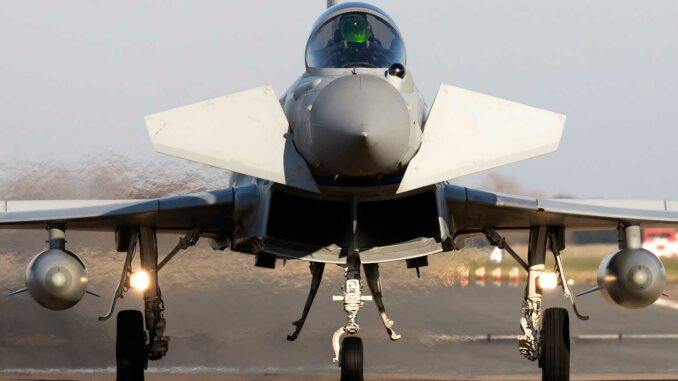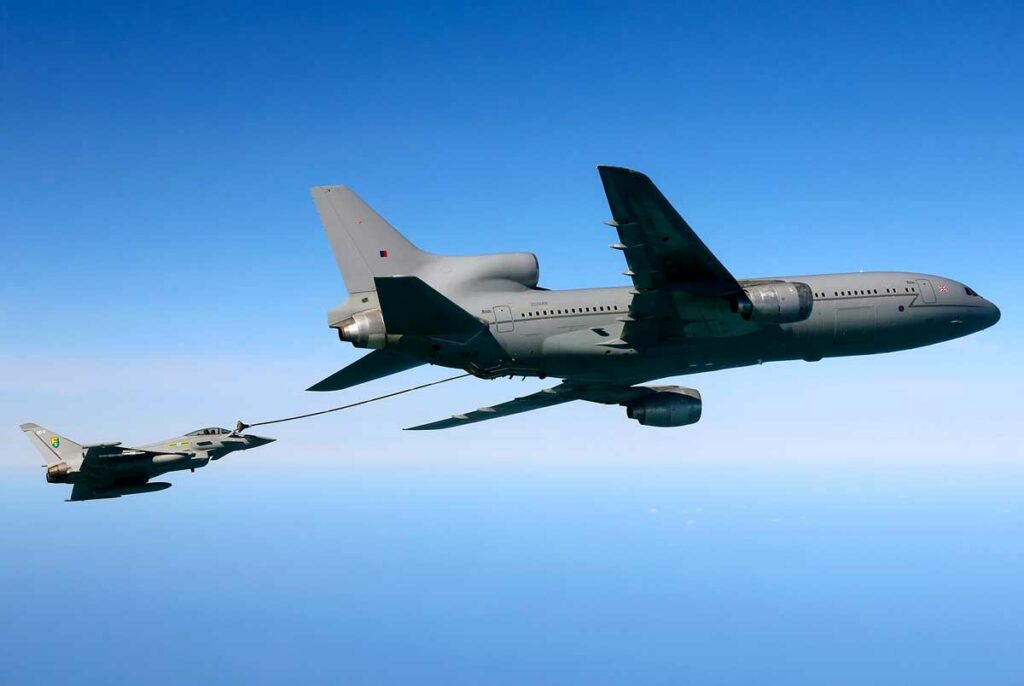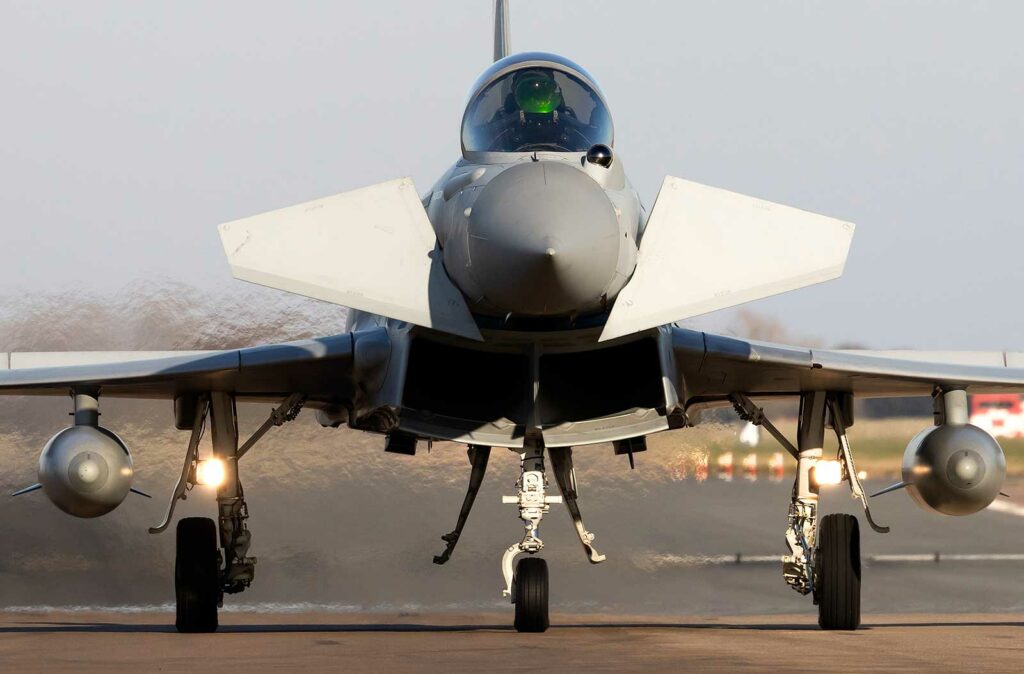
London is sending fighter jets and refueling aircraft to the Middle East to strengthen its military posture amid heightened tensions.
The British government has decided to strengthen its military presence in the Middle East by redeploying fighter jets and air tankers. This move follows intelligence assessments indicating a risk of regional escalation, particularly due to Israeli strikes on Iranian territory. While the UK already has an operational force in the region as part of Operation Shader, this redeployment demonstrates a willingness to anticipate broader scenarios by focusing on strategic flexibility and rapid response capabilities. London has not disclosed the exact number of aircraft sent or their precise location, but the initial movements have been confirmed by radar data. This strategic shift could reflect a shift in British doctrine in the Middle East.

A decision taken in response to intelligence assessments
The announcement by Prime Minister Keir Starmer, on the sidelines of the G7 summit, comes amid high regional tensions. British intelligence services identified a rapid deterioration in the security situation on Friday morning, leading to the activation of deployment procedures. This response shows that the UK’s early warning systems are working in real time and that the decision-making chain remains operational at very short notice.
The nature of the information gathered has not been made public, but the chronological sequence (logistical preparations in the morning, official announcement in the afternoon) suggests that the threat was considered credible by the authorities. These assessments are likely to concern several theaters: Syria, Iraq, but also potentially Iran, in connection with recent events.
The fact that the British Royal Air Force (RAF) can be deployed quickly is a deterrent, intended to demonstrate the UK’s ability to respond in the event of an outbreak of violence. In terms of power projection, the RAF has limited but proven deployment capabilities. The operational lead time for missions in areas of tension can be reduced to less than 24 hours, as demonstrated by this mobilization.
Specific air assets deployed in the region
Among the identified aircraft, the Voyager KC2 tanker was the first to be detected by civilian air tracking systems over Jordan. Capable of transferring up to 111 tons of fuel in flight, this aircraft plays an essential role in enabling Typhoon or F-35B fighter jets to reach or patrol large areas without landing.
The exact number of fighters deployed has not been disclosed, but the types of aircraft generally used by the RAF in this area include the Eurofighter Typhoon FGR4, equipped with Captor-E AESA radar, precision air-to-ground weapons (Paveway IV, Brimstone, Storm Shadow), and a strike capability of over 2,000 km with refueling.
This air deployment is coordinated with the Task Force already in place as part of Operation Shader, which also includes MQ-9 Reaper drones, Sentinel R1 surveillance aircraft, and ground liaison teams. The addition of new fighters and refuelers could extend operational permanence and cover a broader spectrum of targets, including in the event of symmetrical conflict or coordinated retaliation.
The UK also has partner air bases in the region, notably in Al Udeid (Qatar) and Akrotiri (Cyprus), from which aircraft can be redeployed to theaters such as Syria, Iraq, or the Red Sea.
A strategic posture focused on prevention
The Prime Minister’s spokesperson emphasizes the preventive nature of this operation. No offensive is planned at this stage, but the UK intends to maintain a rapid response capability should the situation evolve. This posture is part of a dynamic deterrence strategy based on the idea that a visible military presence can contain escalation.
This choice also reflects a shift in doctrine: the UK no longer intervenes solely in the context of counterterrorism, but is also preparing for interstate or hybrid conflicts. This marks a break with the post-Afghanistan doctrine, which has long focused on asymmetric operations.
It should be noted that this strategy requires substantial logistics, particularly in terms of maintenance, refueling, and inter-allied coordination. Each deployment of Typhoons or F-35Bs requires a ground support unit, spare parts containers, and a secure communications network.
Finally, this increased presence may lead to diplomatic tensions, particularly with regional powers such as Iran, which view these moves as signs of indirect hostility. The risk of unintended clashes in contested airspace remains high.

An extension of Operation Shader?
Operation Shader, launched in 2014, aims to support local forces against ISIS in Iraq and Syria. However, the changing regional context seems to require a broadening of its initial objectives. By integrating multi-role aircraft and additional refueling capabilities, London is ensuring tactical flexibility that goes beyond simple counterinsurgency.
This development nevertheless raises the question of capacity depletion among British forces. The Typhoon fleet remains limited to 139 aircraft in total, only some of which are operational. Simultaneous commitments in the Middle East, Eastern Europe, and the North Atlantic leave little room for maneuver.
The operational cost is also significant. One hour of flight time for a Typhoon is estimated at €89,000, not including the costs of fuel, maintenance, and logistics in a desert environment. This redeployment could ultimately cost several million euros per week.
There is also a political risk, as this intensification of military efforts has not been subject to prior parliamentary debate. It could be criticized in a context of social budget cuts in the United Kingdom or the absence of a clear exit strategy.
War Wings Daily is an independant magazine.